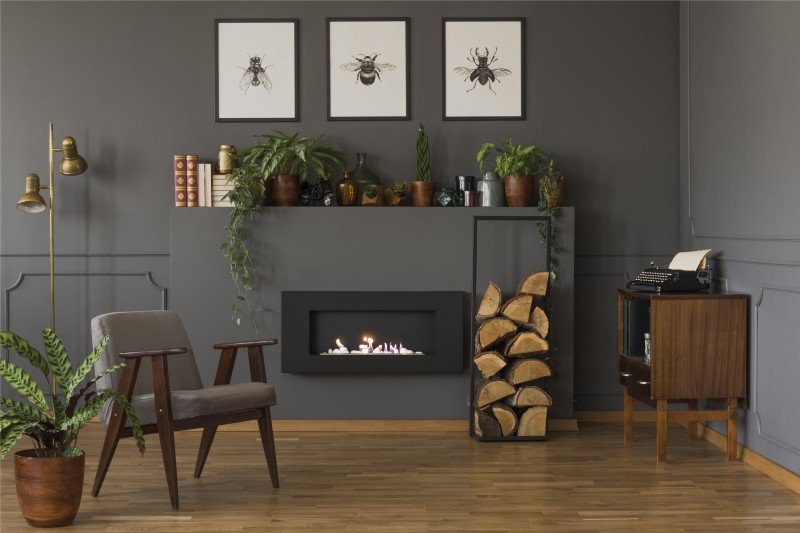7 Simple Strategies To Completely Rocking Your Traditional Fireplaces UK
The Timeless Appeal of Traditional Fireplaces in the UK
Traditional fireplaces have actually long been integral to homes throughout the United Kingdom, going beyond mere energy to become centerpieces of warmth, convenience, and visual charm. This article explores the enduring appeal of traditional fireplaces, exploring their history, style variations, setup considerations, and their modern-day significance.
Historical Significance of Fireplaces
The fireplace has actually played a central role in British homes because medieval times. Originally, they were vital for heating and cooking. Over the centuries, with the development of main heating and technological developments, fireplaces have transformed into signs of heritage and style.
Secret Historical Milestones
Date
Milestone
Description
12th Century
Intro of Chimneys
Enabled indoor fireplaces to be typical, better ventilation.
16th Century
The Renaissance impact
Fireplaces ended up being more decorative, showing the era's designs.
18th Century
The Georgian Era
Established detailed mantels made from wood and stone.
19th Century
Victorian Era
Introduction of cast-iron and tiled fireplaces.
20th Century
Decline and Modern Design
Shift towards gas and electric, with some revival of traditional styles.
Types of Traditional Fireplaces
While contemporary designs focus on minimalism, traditional fireplaces often exemplify detailed craftsmanship and historical significance. Here are some popular types of traditional fireplaces typically discovered in the UK:
Open Hearth Fireplaces
- Identified by a large opening and normally built from brick or stone.
- Provides a cozy ambiance and the noise of crackling flames.
- Needs a correct flue to reroute smoke outdoors.
Wood-Burning Stoves
- Confined units that burn wood for heat, frequently including a glass door.
- More efficient than open hearths, providing better heat retention.
- Offered in various styles, from rustic to contemporary.
Cast Iron Fireplaces
- Popular in the Victorian period, known for elaborate designs.
- Resilient and distinguished for outstanding heat conduction.
- Usually feature intricate patterns or concepts, improving aesthetic appeal.
Tiled Fireplaces
- Often adorned with decorative tiles, these fireplaces showcase artistic style.
- Typical in the 19th century, tiles can include scenes or flower styles.
- Typically coupled with wood or cast iron components.
Marble Fireplaces
- Distinguished for their elegance, these fireplaces are usually personalized.
- Marble provides a glamorous finish and matches different interior styles.
- They need careful installation due to their weight.
Table: Comparison of Traditional Fireplace Types
Fireplace Type
Heat Efficiency
Aesthetic Appeal
Maintenance Needs
Fuel Type
Open Hearth
Low
High
High (chimney cleansing)
Wood
Wood-Burning Stove
High
Moderate
Moderate (wood supply)
Wood
Cast Iron
High
High
Low
Wood/Gas
Tiled
Moderate
Very High
Low (if non-usable)
N/A
Marble
Moderate
Extremely High
Moderate
N/A
Considerations for Installing a Traditional Fireplace
Setting up a traditional fireplace can boost a home's character however includes specific considerations. Here are some points homeowners ought to bear in mind:
Building Regulations: Always examine local building regulations and guidelines. Installation might require permission, particularly if structural modifications are needed.
Material Selection: Choose products that match the home's architecture and individual style. Consider functionality together with aesthetic appeal.
Ventilation: Ensure proper ventilation through a chimney or flue to avoid smoke and gases from building up inside your home.
Security Precautions: Install carbon monoxide detectors and ensure all precaution are in place, especially if using wood-burning choices.
Expert Installation: Engage a certified professional to guarantee safe and effective installation, abiding by security standards.
Benefits of Traditional Fireplaces
Regardless of the increase of modern heating options, traditional fireplaces remain cherished for a number of factors:
Aesthetic Charm
- Includes character to any room.
- Works as a social focal point, improving gatherings.
Mental Comfort
- Provides heat not simply physically however emotionally.
- Produces a cozy environment suitable for relaxation.
Value Addition to Property
- Enhances the appeal of a home to prospective buyers.
- Often increases property worth due to their desirability.
Ecological Considerations
- Wood can be an eco-friendly resource when sourced sustainably.
- Traditional fireplaces can contribute less to energy bills compared to electric systems.
Regularly Asked Questions (FAQs)
1. Are traditional fireplaces energy effective?
While traditional fireplaces might not be as energy-efficient as modern heating unit, improvements in design, such as the setup of glass doors, can boost their performance. Wood-burning ranges are particularly understood for being more effective than open hearths.
2. How often should traditional fireplaces be cleaned?
Chimneys ought to be checked and cleaned at least when per year, particularly if the fireplace is utilized routinely. This prevents creosote buildup, which can lead to chimney fires.
3. Can More inspiring ideas utilize a traditional fireplace for gas heating?
Yes, traditional fireplaces can typically be transformed to use gas. This includes installing a gas line and might require a conversion package depending on the fireplace design.
4. What are the best fuels for wood-burning fireplaces?
Experienced hardwoods such as oak, hickory, or maple are recommended for wood-burning fireplaces as they burn hotter and longer than softwoods.
5. Can traditional fireplaces be utilized in modern homes?
Absolutely! Lots of modern styles include traditional aspects, permitting a harmonious mix of styles. Additionally, traditional fireplaces can add an unique touch to contemporary homes.
From their historical significance to their modern-day importance, traditional fireplaces stay an ultimate feature in numerous UK homes. Their enduring popularity is not just rooted in their performance but likewise in the warmth and appeal they use. Whether one go with a classic open hearth or a perfectly tiled fireplace, the option contributes to producing an inviting environment where memories can be made. As property owners become more conscious of visual appeals and nostalgia, traditional fireplaces are poised to preserve their attraction for generations to come.
